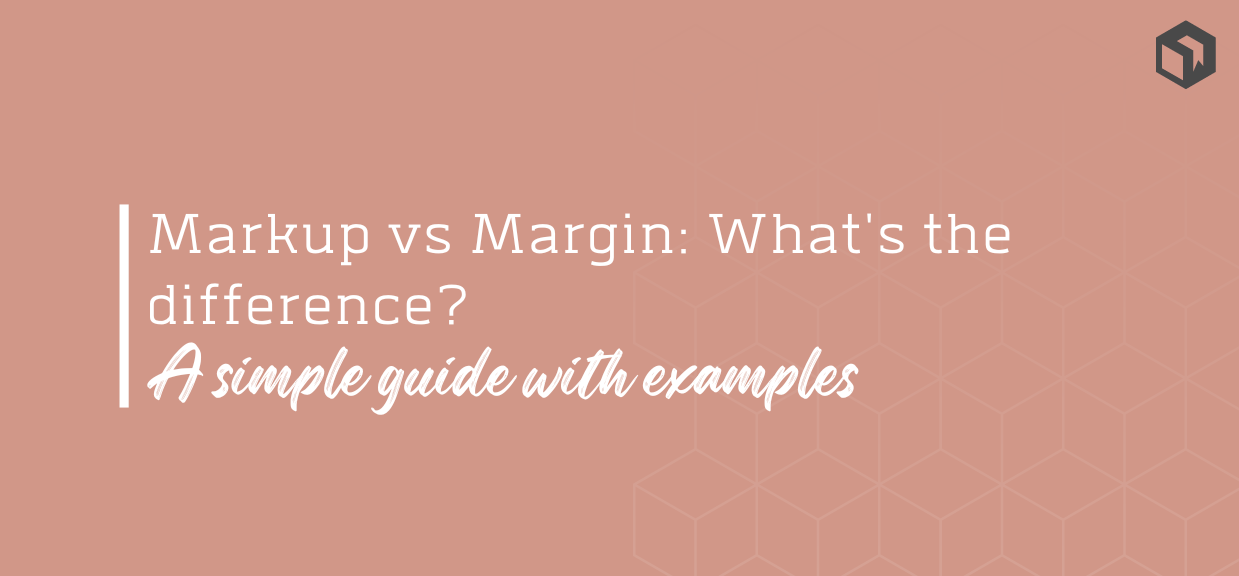The difference between markup and margin: A simple breakdown
We discuss markup vs margin and margin vs profit, how to calculate them and why they are useful in deciding on your product pricing.

Many people often use the terms markup and profit interchangeably. However, they do have different meanings and are calculated differently. To make sure you’re pricing your products correctly, it’s important to understand the difference between markup and margin.
In this article, we’ll break down the difference between markup and margin, and show you how to calculate each.
Need to get your raw material and product inventory under control?
Try Craftybase - the inventory and manufacturing solution for DTC sellers. Track raw materials and product stock levels (in real time!), COGS, shop floor assignment and much more.
It's your new production central.
What is markup?
Let’s start with Markup. Markup is essentially the amount added to your production cost price to arrive at a price. It is a commonly used technique to add a consistent profit margin to your product prices.
For example, let’s say you have a product that costs you $10 to produce. You want to add a 20% markup to that product, which would give you a selling price of $12 ($10 x 1.2).
How to calculate markup
There are two main ways to calculate markup: percentage and dollar.
Percentage markup is calculated by taking your production cost and multiplying it by the percentage you want to mark up your product.
So, using our example above, if we wanted to calculate the markup for our product as a percentage, we would take our production cost of $10, and multiply it by 1.2 (or 20%). This would give us a markup of $2.
Dollar markup is simply the amount of money you want to add to your production cost price to arrive at your selling price. So, in our example, if we wanted to add a dollar markup of $2, we would simply add $2 to our production cost price of $10, to arrive at a selling price of $12.
For more details on how to calculate markups on your products, see our article here: How to calculate pricing markups for your handmade products →
What is margin?
Margin, on the other hand, is the difference between your selling price and your production cost price.
To calculate margin, you would simply take your selling price and subtract your production cost price. Using the example above, your margin would be $2 ($12 - $10).
What is a margin percentage?
You can also calculate what is called a margin percentage. This is simply the margin divided by the selling price. In our example, that would give you a margin percentage of 16.7% ($2/$12).
What is the difference between profit and margin?
Your profit margin is a metric that determines how much revenue you are bringing in for your product relative to its cost to produce. Profit margin is usually calculated as a percentage so that it can be easily compared across your entire product range.
To calculate your profit margin, you’ll start with the selling price of the product (Price). From here, subtract the cost to produce the product. The resulting amount is your gross profit. Now, divide the gross profit by your price to get the gross profit margin.
The formula to use to calculate your profit margin is as follows:
To show the difference between profit margins and markups, the following table shows some examples:
Markup vs Margin Table
| Base Cost | Markup | Price | Profit Margin |
|---|---|---|---|
| $29 | 0% | 0 | 0 |
| $29 | 50% | $43.50 | 42.83% |
| $29 | 100% | $58.00 | 57.5% |
| $29 | 150% | $72.50 | 72.1% |
| $29 | 200% | $87.00 | 86.6% |
As you can see, as you add a bigger markup to your product your profit margin also increases - however they do so at a completely different rate.
Margin v Markup: Which one should you use?
Now that you know the difference between markup and margin, you might be wondering which one you should use. The answer to that question really depends on your business and what makes the most sense for you.
Some businesses prefer to use markup because it’s a consistent way to add profit to their products. Others prefer margin because it allows them to more easily adjust their prices based on production costs.
The important thing is that you pick one method and stick to it. Consistency is key when pricing your products.
Using software to calculate your margins and pricing
If you sell DTC products, chances are you’ve struggled with pricing at some point. After all, there’s a lot to consider when coming up with prices for your products.
Luckily, there’s software that can help. Craftybase is designed specifically for small manufacturing businesses. We help you track your production costs, calculate your margins and prices, and manage your inventory - all in one place.
Best of all, we have a range of low cost plans that’s perfect for small businesses. So why not give us a try? We think you’ll be surprised at how easy pricing can be with the right tools.
